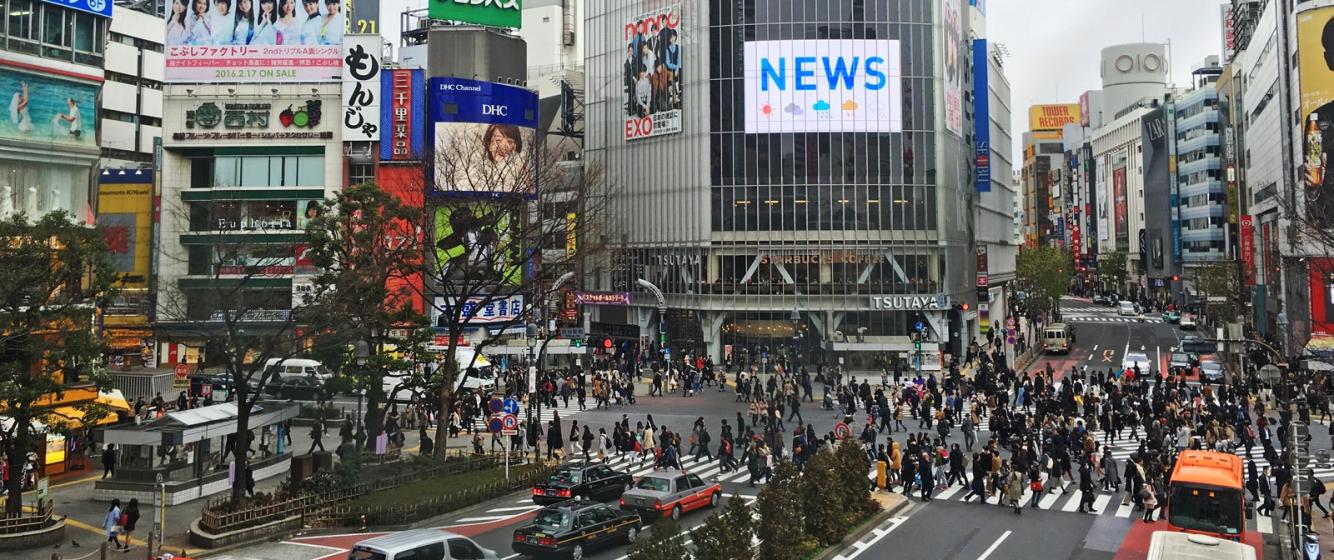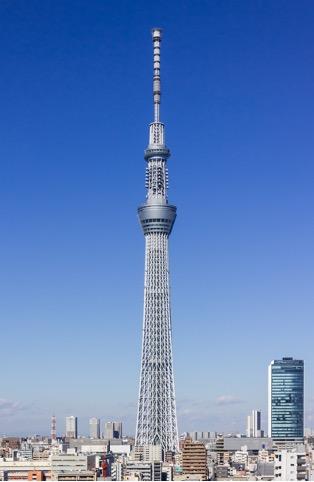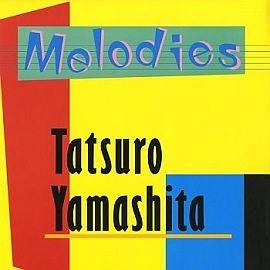In 1987 at the height of Japan’s famous “Bubble Economy “a relatively small 10 KW FM radio station erected its transmitter on the top of Tokyo Tower and began test broadcasts. Licensed as JOAV and broadcasting at 81.3 on Japan’s FM dial, J-Wave began to change the pop music world when it officially went on-air in 1989. The station took part of its name from the name of a famous Roppongi record store called WAVE. The J came later to indicate Japan as a brand. It was only the second ever FM radio station to go on the air in Tokyo (the first was Tokyo-FM).
J-Wave started with a fresh concept: play the newest music popular with the youth of the Tokyo area. They used a format already sweeping the United States at the time: long periods of back-to-back music with relatively short breaks in which they played relatively few commercials. In Japan in 1989, there were legal limits: the maximum time that a station could broadcast without an ID and commercial break had to work out to no more than 80% of air-time. At least 20% had to be committed to commercials and talk time. J-Wave maxed out this formula.
Looking for a competitive edge in a market already saturated with radio stations, J-Wave decided to lure young people with Western popular music. They called their on-air hosts “navigators” rather than DJs, and hired multicultural individuals who could converse and introduce music, and engage in conversational banter in English and Japanese. Their playlists included music from Europe and the United States, but their format was not a copy of American radio formats. Instead, J-Wave introduced its own musical format which added to its popularity. Even more radical in its concentration on music, 80% of J-WAVE’s broadcasts were music, 10% were talk, and 10% were commercials. Long stretches of every hour were dedicated to just the music. This included mostly Western music at first but later Japanese music that sounded new - Western-sounding, but with Japanese lyrics punctuated with English phrases. This grew into a wildly successful strategy that led to the success of future Japanese groups such as Chage and Aska, a duo who attained international popularity with their smash hit, “Say Yes” (1991), Kome Kome Club, whose 1987 hit “Roman Hikō” for a Japan Airlines commercial sprang them to fame, and Mr. Children, who rose to fame with “Tomorrow Never Knows.”
Why the shift to adding western-souding Japanese music (or Japanese-sounding Western music)? In a historical coincidence, Japan’s record industry was in the 1980s experiencing the fallout from the market switch from the market dominance of yōgaku (defined as music produced and pressed in the West, and/or music created and sung by Western artists or in foreign languages) to hōgaku (defined as music produced and manufactured in Japan, in the Japanese language, and/or by Japanese artists and composers).
American music was well-known, and concerts by US and British artists such as “Japan,” Guns N’ Roses, Janet Jackson, and Michael Jackson regularly sold out in Tokyo. By 1989 Japan was fully enmeshed in the globalized music industry.
The management of J-Wave initially concentrated on differentiating themselves from Tokyo FM by playing Western music exclusively. They did this to grab the market share J-Wave needed to become a competitive player in the Tokyo radio market. It was popular among the urban young people living in Tokyo, Yokohama, and Chiba, who were working in the middle of Japan’s famed “Bubble” period of high growth and international economic power.
According to Japanese journalist Ugaya Hiromichi, the question was what to call this new Japanese version of Western popular music. Hōgaku, or the prewar term for popular songs - Kayōkyoku, was too general and too traditional. For a time, they considered a term close to one used today that emphasized the urban feel of the new music - “City Pops.” Eventually, they settled on “J-pop.” It branded the music as Japanese with the J, and reflected the brand of the radio station - J-WAVE. It suggested the sophisticated cool that young Japanese felt about themselves and their homeland. It was national and international at the same time. Thus, the J in J-WAVE and in J-pop was not for international consumption. It was a marker for the domestic market to indicate that Japan was the cultural equivalent of the West.
Sources
Atkins, E. Taylor (Everett Taylor). A History of Popular Culture in Japan : from the Seventeenth Century to the Present. London ;: Bloomsbury Academic, an imprint of Bloomsbury Publishing Plc, 2017.
Bourdaghs, Michael K. Sayonara Amerika, Sayonara Nippon : a Geopolitical Prehistory of J-Pop. New York: Columbia University Press, 2012
Condry, Ian. Hip-Hop Japan: Rap and the Paths of Cultural Globalization. Durham: Duke University Press, 2006.
Kawabata Shigeru, “The Japanese Record Industry,” Popular Music, vol. 10, no. 3, Japanese Issue, Oct. 1991: Cambridge: Cambridge University Press, pp. 327-345.
Mitsui Toru, “Japan in Japan: Notes on an Aspect of the Popular Music Record Industry in Japan,” Popular Music, Vol. 3, Producers and Markets (1983): Cambridge University Press, pp. 107-120
Ugaya Hiromichi: What is Jpop?: The Effect of the Music Business on Mass Culture, Tokyo: Iwanami Shoten, 2005.




Add new comment